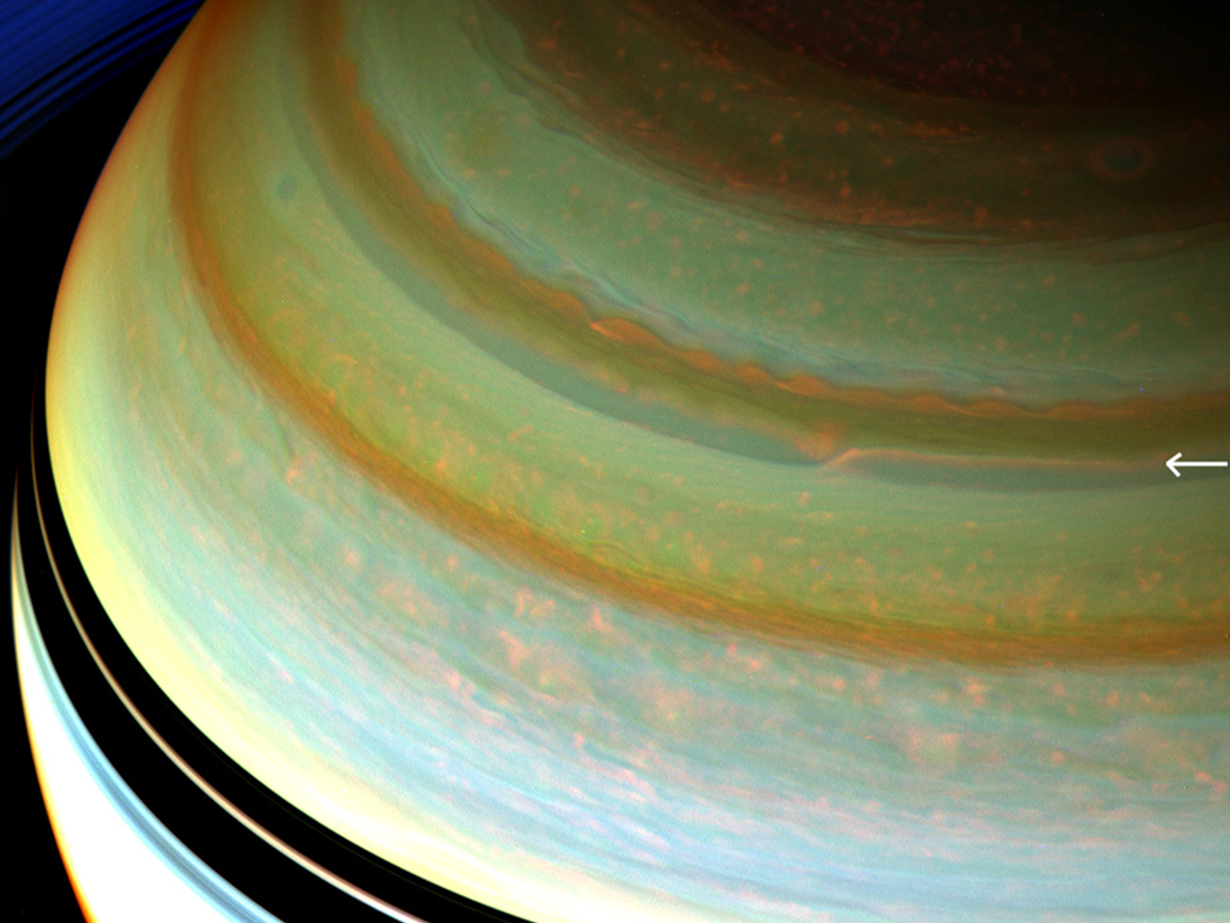Saturn's Atmosphere: All the Way Down
Saturn is known as a gas giant for a reason. The planet lacks a solid surface, so the transition between the murky atmosphere and the interior is imprecise.
Atmospheric makeup
Saturn is made up predominantly of hydrogen, which it captured in the early stages of its formation. Most of the remaining composition is helium. Other elements, such as methane and ammonia, are found in small doses. Nitrogen and oxygen also mix within the atmosphere.
Although helium makes up almost a quarter of the mass of the planet, the atmosphere itself is only about 7 percent helium. This implies that much of the planet's helium is sinking through the hydrogen.
The distance to Saturn from the sun keeps these gases, and the temperature of the planet, cold. Traces of water are present in the atmosphere, but predominantly as ice.
The surface of Saturn is defined by the region where the pressure of the planet reaches one bar, equivalent to the pressure at sea level on Earth.
Climate and weather
Breaking space news, the latest updates on rocket launches, skywatching events and more!
Like Jupiter, Saturn boasts layers of clouds. But the bands of the ringed planet are less stunning than its more brilliantly-striped sibling. Stripes on Saturn are wider, particularly near the equator. The colder bands, where gases are rising, are known as zones, while gas within the warmer belts falls back toward the planets. Saturn contains more sulfur than Jupiter, which give its zones and belts an orangish, smog-like cast.
Saturn's temperature and pressure increase from the exterior of the planet toward its center, changing the makeup of the clouds. The upper layers of clouds are made up of ammonia ice. Traveling toward the core, clouds of water ice form, with bands of ammonium hydrosulfide ice intermixed. The lower layers of Saturn see higher temperatures and pressures. Water droplets are found here, mixed with ammonia.
Saturn boasts some of the fastest winds in the solar system. NASA's Voyager mission measured winds traveling at more than 1,100 mph (1,800 kph) at the planet's equator, traveling mostly in an easterly direction. Wind speeds die off at higher altitudes.
Cloud patterns on Saturn
Saturn boasts some unique features in its atmosphere. When the Voyager missions traveled to the planet in the early 1980s, it imaged a hexagon-shaped cloud formation near the north pole. Twenty-five years later, infrared images taken by Cassini revealed the storm was still spinning, powered by jet streams that push it to speeds of about 220 mph (100 meters per second). At 15,000 miles (25,000 km) across, the long-lasting storm could easily contain an Earth or two.
Other features of Saturn are less long-lived. Gigantic thunderstorms known as Great White Spots occur once every Saturn year — that's once every three decades on Earth — around the northern hemisphere's summer solstice.
— Nola Taylor Redd, SPACE.com Contributor
Related:

Nola Taylor Tillman is a contributing writer for Space.com. She loves all things space and astronomy-related, and always wants to learn more. She has a Bachelor's degree in English and Astrophysics from Agnes Scott College and served as an intern at Sky & Telescope magazine. She loves to speak to groups on astronomy-related subjects. She lives with her husband in Atlanta, Georgia. Follow her on Bluesky at @astrowriter.social.bluesky

